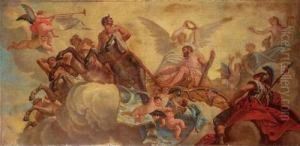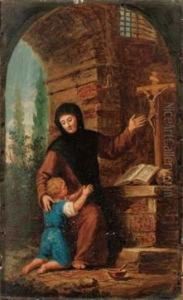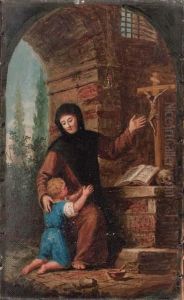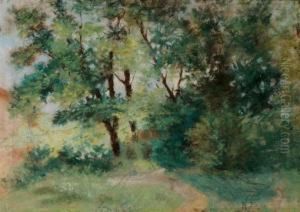Lattanzio Querena Paintings
Lattanzio Querena was an Italian painter who lived during the 18th and 19th centuries, a period that saw significant transitions in art with the waning of the Rococo style and the rise of Neoclassicism and Romanticism. Born in 1768 in the city of Lecco, in the region of Lombardy, Querena was part of a family with a strong artistic tradition. His father, Giovanni Battista Querena, was also a painter, and it was under his guidance that Lattanzio began his initial training in the arts.
Querena's early career was marked by his move to Venice, which was then one of the leading centers of artistic production in Italy. There, he became a pupil of the painter Teodoro Matteini, who was a prominent exponent of Neoclassicism. This education had a lasting impact on Querena's style, which often reflected the clarity of form and historical themes characteristic of the Neoclassical movement. However, Querena was also influenced by the Venetian painting tradition, known for its rich color and atmospheric effects, which can be seen in his handling of light and shadow.
During his career, Lattanzio Querena gained recognition for his historical and religious paintings. He was adept at large-scale compositions and was commissioned to create works for various churches and public buildings in Venice and its surrounding regions. Some of his notable works include 'The Entry of Henry III into Venice' and 'The Miracle of the Holy House of Loreto'. His religious paintings often featured dramatic narratives and were marked by their expressive intensity.
Despite the notable achievements in his lifetime, Querena's work was later overshadowed by the more dominant figures of the art world of his time, such as Canova and Hayez, and thus he did not maintain a high profile in the centuries following his death in 1853. Nonetheless, his contributions to the Italian painting tradition during a time of stylistic evolution are still appreciated by art historians and collectors today. His works can be found in various Italian museums, churches, and collections, serving as a testament to his skill and creativity as an artist.



